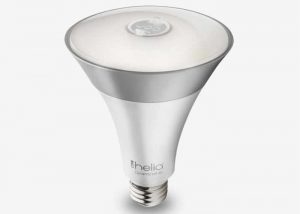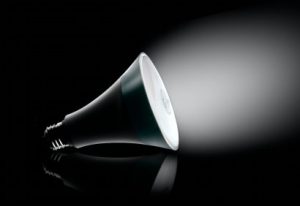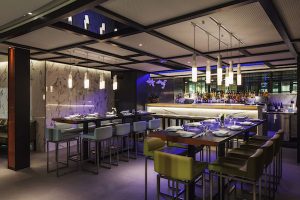Shuji Nakamura, who co-founded Soraa with two fellow University of California, Santa Barbara professors in 2008, is sharing the Nobel Prize with two Japanese scientists, Isamu Akasaki and Hiroshi Amano. The three scientists revolutionized lighting technology two decades ago when they came up with a long-elusive component of the white LED lights that in countless applications today have replaced less efficient incandescent and fluorescent lights.
The three scientists were the first to master the intricate layering of semiconductor materials needed to create blue-light emitting diodes. Though red and green diodes had been invented decades earlier, blue was needed to complete the trio and create a light that would be white in color.
“They succeeded where everyone else had failed,” the Nobel committee said. “Incandescent light bulbs lit the 20th century; the 21st century will be lit by LED lamps.”
Their work enabled LED lights – more efficient and long-lasting than previous light sources – to be used in a range of everyday applications, from illuminating homes to lighting up televisions, computer screens and smartphones.
“It is very satisfying to see that my dream of LED lighting has become a reality,” Nakamura, 60, said in a statement released by the University of California, Santa Barbara, where he is a professor. “I hope that energy-efficient LED light bulbs will help reduce energy use and lower the cost of lighting worldwide, and that is why we founded Soraa.”
Red and green light-emitting diodes have been around since the mid-20th century and have been used in applications such as watches and calculators. But scientists had struggled for decades to produce the shorter-wavelength blue LED needed in combination with the others to produce white light. The three laureates made their breakthroughs in the early 1990s.
“His work has resulted in new industries in clean technology, and in reducing energy consumption for illumination,” said Stephen P. DenBaars, one of the other UC Santa Barbara professors who co-founded Soraa, in a statement. “Eventually, we expect the majority of all lighting to be done with LEDs.”
Soraa, which agreed to move to a state-owned and equipped factory in Buffalo as part of Gov. Andrew M. Cuomo’s Buffalo Billion economic development plan, bases its LED lighting business around a different innovation than the blue LED, which now is a standard part of LED technology.
Instead, Soraa’s technology is built around a process that allows it to base its lamps on a single material – gallium nitride. Most other LED manufacturers pair gallium nitride with a different, less expensive, material, such as sapphire or silicon carbide.
It is more challenging to make LED using a gallium nitride substrate, but using the same material for both parts means fewer defects, allowing it to handle higher levels of electrical power. Because the LEDs can be run at higher power, they can produce more light from a smaller surface area.
“Largely as a result of his work, Soraa has been able to push the boundaries of what is possible in high-performance LED lighting,” said Jeff Parker, Soraa’s chief executive officer, in a statement.
Soraa originally was set to move into the RiverBend complex in South Buffalo, but state officials now are seeking a new site for the company after plans by SolarCity to build a solar panel factory on the same property grew to five times their original scope.
Akasaki, an 85-year-old professor at Meijo University and Nagoya University, said in a nationally-televised news conference in Japan that he had often been told that his research wouldn’t bear fruit.
“But I never felt that way,” he said. “I was just doing what I wanted to do.”
Akasaki and Amano, 54, made their inventions while working at Nagoya University while Nakamura was working separately at Japanese company Nichia Chemicals. They built their own equipment and carried out thousands of experiments – many of which failed – before they made their breakthroughs.
In 2005, Nakamura sued Nichia in a dispute over the rights to his discovery. The company originally paid Nakamura 20,000 yen – worth about $185 today – for his contribution to the diode, which a Tokyo court ruled could be worth 60 billion yen. Nichia settled with Nakamura for about 840 million yen, or about $8 million.
In a light-emitting diode, the electricity is directly converted into light particles, leading to efficiency gains compared with other light sources, where much of the electricity is converted to heat rather than light.
The Nobel committee said LEDs contribute to saving the Earth’s resources because about one-fourth of world electricity consumption is used for lighting purposes. They tend to last 10 times longer than fluorescent lamps and 100 times longer than incandescent light bulbs.
“An enormous increase of power efficiency” is the result, Olle Inganaes, a professor of biomolecular and organic electronics at Linkoeping University in Sweden, said at a press conference held by the science academy in Stockholm. “Something like a fourth of our electricity consumption in most industrialized economies goes to illumination. So having much more light for much less electricity is going to have a big impact on our modern civilization.”
David Robinson
Buffalo News



